In the realm of automotive ownership, ensuring adequate insurance coverage is paramount. It serves as a safety net, protecting you from unforeseen financial burdens resulting from accidents or other covered events. Determining the right amount of coverage can be a daunting task, but with careful consideration and informed decisions, you can strike a balance between comprehensive protection and affordability.
This comprehensive guide delves into the intricacies of auto insurance coverage, providing invaluable insights and practical tips to help you tailor your policy to your unique needs. From understanding various coverage types and assessing liability limits to evaluating collision and comprehensive coverage options, we’ll equip you with the knowledge to make informed choices.
Assessing Liability Coverage
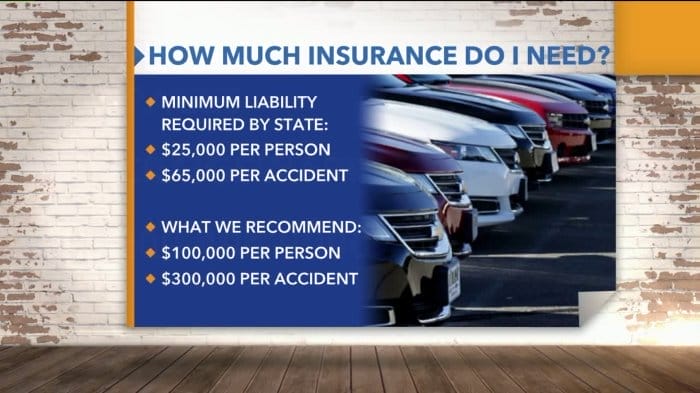
Liability coverage is crucial for protecting yourself against financial repercussions in the event of an accident that results in injuries or property damage to others. It covers the legal claims made against you, including legal fees and settlements.
Determining the appropriate amount of liability coverage depends on various factors:
State Requirements
Each state has its own minimum liability coverage requirements. These requirements set the lowest limits of coverage that drivers must carry. Failing to meet these requirements can result in penalties, including fines and license suspension.
Personal Assets
Consider your personal assets, such as your home, vehicles, and savings. Liability coverage helps protect these assets from being seized to satisfy legal judgments against you.
Driving History
Your driving history plays a significant role in determining your liability coverage needs. If you have a history of accidents or traffic violations, you may need higher limits of coverage to mitigate the increased risk.
Evaluating Collision and Comprehensive Coverage
Understanding the differences between collision and comprehensive coverage is crucial for selecting the right amount of auto insurance. Both coverages protect your vehicle from specific risks, but their functions and costs vary.
Collision Coverage
Collision coverage protects your vehicle from damages caused by collisions with another object, such as a car, tree, or guardrail. It covers both at-fault and not-at-fault accidents. This coverage is particularly important if you live in an area with heavy traffic or if you frequently drive in hazardous conditions.
Comprehensive Coverage
Comprehensive coverage protects your vehicle from damages caused by events other than collisions, such as theft, vandalism, fire, flood, and falling objects. It also covers damages caused by animals, such as deer or squirrels. This coverage is recommended for vehicles that are subject to these types of risks.
Determining the Value of the Insured Vehicle
The value of your insured vehicle significantly impacts your coverage decisions. The coverage limits for collision and comprehensive coverage are typically based on the actual cash value (ACV) of your vehicle. The ACV is the current market value of your vehicle, considering its age, mileage, condition, and any special features.Understanding
the ACV of your vehicle is crucial for selecting the right coverage limits. If your coverage limits are lower than the ACV of your vehicle, you may not receive enough compensation to cover the full cost of repairs or replacement in case of an accident or covered event.
Selecting Deductibles for Collision and Comprehensive Coverage
A deductible is the amount you pay out of pocket before your insurance coverage starts to pay for damages. When selecting deductibles for collision and comprehensive coverage, consider the following factors:
-
-*Your financial situation
Choosing a higher deductible can lower your insurance premium, but it means you’ll have to pay more out of pocket if you need to file a claim.
-*Your vehicle’s value
If your vehicle is older or has a lower ACV, a higher deductible may be a good option. However, if your vehicle is newer or has a higher ACV, a lower deductible may be preferable.
-*Your driving record
If you have a history of accidents or traffic violations, you may have to pay higher insurance premiums. In this case, choosing a higher deductible may help lower your overall insurance costs.
Additional Coverage Options

Beyond the basic coverage options, consider additional coverage options that can provide extra protection and peace of mind.
Uninsured/Underinsured Motorist Coverage
This coverage protects you in case of an accident caused by a driver who doesn’t have enough insurance or is completely uninsured. It covers bodily injury and property damage.
- Example: You’re driving through an intersection when a driver runs a red light and hits you. The other driver doesn’t have insurance, and your medical bills and car repairs exceed your liability coverage limits. Uninsured/underinsured motorist coverage would cover the remaining expenses.
Medical Payments Coverage
This coverage helps pay for medical expenses for you and your passengers, regardless of who is at fault in an accident. It can cover costs like doctor visits, hospital stays, and rehabilitation.
- Example: You’re driving to work when you’re rear-ended by another car. You suffer minor injuries, but your medical bills add up quickly. Medical payments coverage would help cover these expenses, even if the other driver was at fault.
Rental Car Reimbursement Coverage
This coverage reimburses you for the cost of renting a car if your car is damaged or stolen. It can be a valuable addition to your policy if you rely on your car for transportation.
- Example: Your car is stolen from your driveway. It takes the police several weeks to locate and recover your car, and you need to rent a car in the meantime. Rental car reimbursement coverage would cover the cost of the rental car.
Understanding Coverage Limits and Deductibles
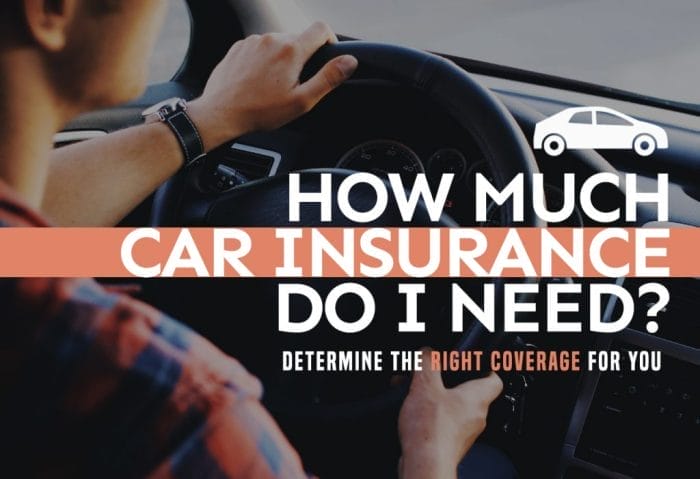
Auto insurance policies include coverage limits and deductibles that play crucial roles in determining the extent of financial protection and out-of-pocket expenses. Understanding these concepts is essential for making informed decisions about your auto insurance coverage.
Coverage Limits
Coverage limits specify the maximum amount your insurance company will pay for covered losses or damages. These limits vary depending on the type of coverage and the policy you choose. Common coverage limits include:
- Liability Coverage: This covers damages or injuries caused to others in an accident you are at fault for. Liability limits are typically expressed as two numbers, such as $100,000/$300,000. The first number represents the maximum amount the insurance company will pay for bodily injury per person, and the second number represents the maximum amount for all bodily injuries in a single accident.
- Collision Coverage: This covers damages to your own vehicle in an accident, regardless of fault. Collision coverage limits are usually expressed as a dollar amount, such as $10,000 or $25,000.
- Comprehensive Coverage: This covers damages to your vehicle caused by events other than collisions, such as theft, vandalism, fire, or natural disasters. Comprehensive coverage limits are typically expressed as a dollar amount, similar to collision coverage.
Deductibles
A deductible is the amount you pay out-of-pocket before your insurance coverage kicks in. When you file a claim, you are responsible for paying the deductible first, and the insurance company will cover the remaining costs up to the coverage limit.
Deductibles can vary from $0 to $1,000 or more, depending on the type of coverage and the policy you choose. Higher deductibles typically result in lower premiums, while lower deductibles result in higher premiums.
| Coverage Type | Coverage Limit | Deductible | Impact on Premiums | Potential Out-of-Pocket Expenses |
|---|---|---|---|---|
| Liability Coverage | $100,000/$300,000 | $500 | Lower | Up to $500 per accident |
| Liability Coverage | $250,000/$500,000 | $1,000 | Higher | Up to $1,000 per accident |
| Collision Coverage | $10,000 | $500 | Lower | Up to $500 per accident |
| Collision Coverage | $25,000 | $1,000 | Higher | Up to $1,000 per accident |
| Comprehensive Coverage | $10,000 | $500 | Lower | Up to $500 per accident |
| Comprehensive Coverage | $25,000 | $1,000 | Higher | Up to $1,000 per accident |
Factors Influencing Coverage Needs
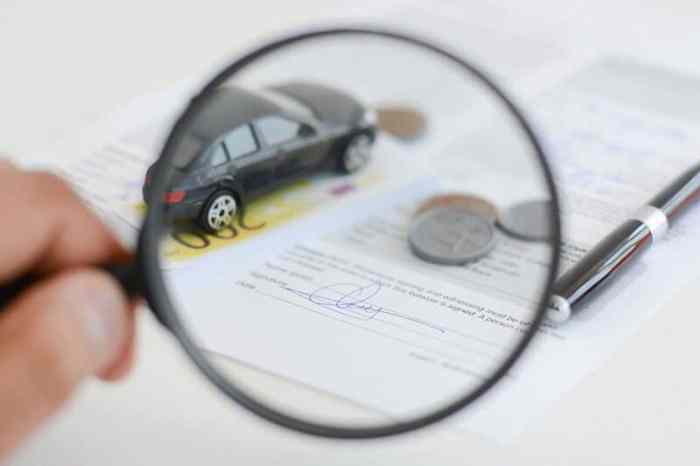
The amount of auto insurance coverage you need depends on a variety of factors, including your age, driving experience, type of vehicle, and annual mileage. These factors can affect your risk profile, which in turn affects your insurance premiums.
Age and Driving Experience
Younger drivers and those with less experience are typically considered to be higher risk drivers, and as a result, they often pay higher insurance premiums. This is because they are more likely to be involved in accidents. As you get older and gain more experience, your risk profile improves, and your insurance premiums may decrease.
Type of Vehicle
The type of vehicle you drive can also affect your insurance premiums. Sports cars and other high-performance vehicles are typically more expensive to insure than sedans or minivans. This is because they are more likely to be involved in accidents and are more expensive to repair.
Annual Mileage
The number of miles you drive each year can also affect your insurance premiums. Drivers who put more miles on their vehicles are more likely to be involved in accidents. As a result, they often pay higher insurance premiums than drivers who drive less.
Balancing Coverage and Cost
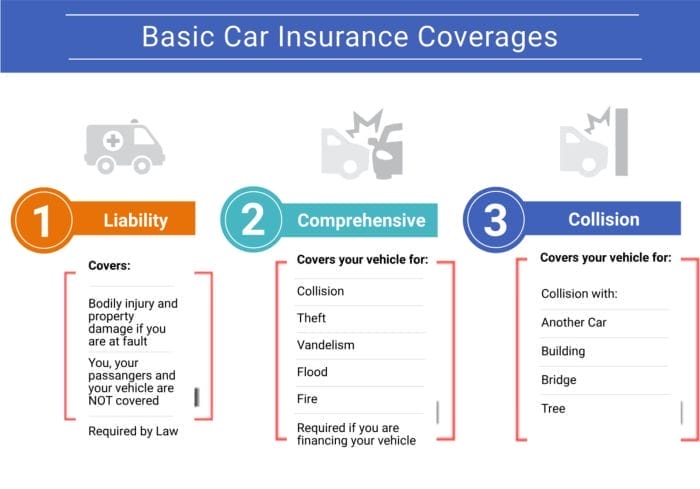
Finding the right balance between adequate auto insurance coverage and affordability is crucial for responsible financial planning. While comprehensive coverage is ideal, it’s essential to consider your budget and make informed decisions.
To manage insurance costs effectively, consider the following tips:
Compare Quotes from Multiple Insurers
Shopping around for auto insurance quotes from different providers can help you find the best rates. Online comparison tools and insurance agents can assist you in comparing coverage options and premiums.
Opt for Higher Deductibles
Choosing a higher deductible can lower your insurance premiums. However, ensure you select a deductible that you can comfortably afford to pay in case of an accident.
Take Advantage of Discounts
Many insurance companies offer discounts for various factors, such as being a safe driver, maintaining a clean driving record, insuring multiple vehicles with the same company, and installing anti-theft devices. Ask your insurer about available discounts.
Reviewing Coverage Regularly

Regularly reviewing your auto insurance coverage is essential to ensure that it remains aligned with your evolving needs and circumstances. Life undergoes constant change, and these changes can significantly impact your insurance requirements.
Major life events, such as marriage, the birth of a child, or a change in employment status, can alter your lifestyle and increase your need for coverage. Additionally, purchasing a new vehicle or adding a vehicle to your household can also necessitate adjustments to your insurance policy.
Changing Circumstances
- Marriage: Getting married can affect your insurance rates and coverage needs. Combining policies with your spouse may result in discounts and better coverage options.
- Birth of a Child: The arrival of a child may prompt you to consider additional coverage, such as increased liability limits or personal injury protection.
- Change in Employment Status: A change in job status, such as starting a new job or becoming self-employed, can impact your insurance needs. Your commute distance and vehicle usage may change, necessitating adjustments to your policy.
- New Vehicle Purchase: Acquiring a new vehicle often requires updating your insurance policy to reflect the vehicle’s value and specific features.
- Adding a Vehicle: Adding a vehicle to your household means expanding your insurance coverage to include the new vehicle.
Consulting an Insurance Professional

Seeking the advice of an experienced insurance agent or broker is highly recommended to accurately assess your individual coverage needs. Working with an insurance professional offers numerous benefits.
Personalized Recommendations
Insurance agents can evaluate your specific situation, including your vehicle, driving habits, and financial circumstances, to tailor coverage recommendations that align with your unique requirements.
Guidance on Policy Options
Insurance policies can be complex, and an agent can help you navigate the various options available, explaining the coverage limits, deductibles, and endorsements to ensure you understand the protection you’re purchasing.
Assistance with Claims
In the unfortunate event of an accident or loss, your insurance agent can guide you through the claims process, ensuring that you receive the benefits you’re entitled to and that your claim is handled smoothly and efficiently.
Conclusion
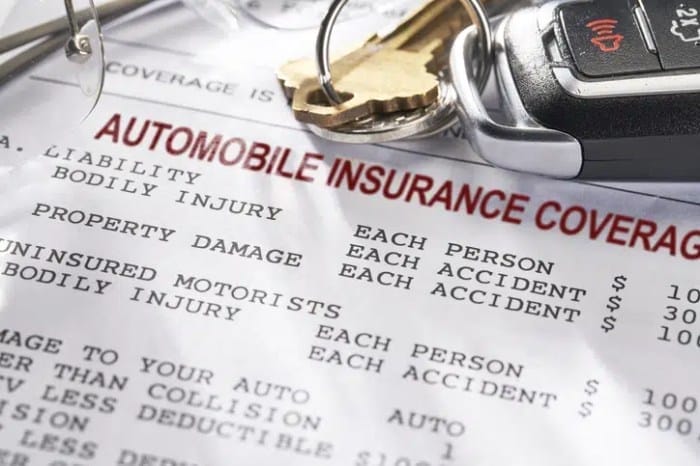
Remember, auto insurance is not a one-size-fits-all solution. Your coverage needs are as unique as your driving habits, vehicle, and lifestyle. By understanding the nuances of different coverage types, assessing your risk profile, and consulting with an insurance professional, you can create an insurance policy that provides peace of mind without breaking the bank.
Stay informed, review your coverage regularly, and adjust it as your circumstances change. With the right coverage, you can navigate the roads with confidence, knowing you’re protected.
FAQ
What factors influence the cost of auto insurance?
The cost of auto insurance is influenced by various factors, including age, driving history, type of vehicle, annual mileage, and location. Younger drivers, those with poor driving records, and owners of high-performance or luxury vehicles typically pay higher premiums.
What is the purpose of a deductible in auto insurance?
A deductible is the amount you pay out of pocket before your insurance coverage kicks in. Choosing a higher deductible can lower your insurance premiums, but it also means you’ll have to pay more out of pocket in the event of a claim.
What is uninsured/underinsured motorist coverage, and why is it important?
Uninsured/underinsured motorist coverage protects you in case you’re involved in an accident with a driver who doesn’t have insurance or doesn’t have enough insurance to cover the damages. This coverage can provide valuable financial protection in hit-and-run accidents or when dealing with drivers who carry minimal liability insurance.



